Innovations Siding & Windows A Home Improvement Guide
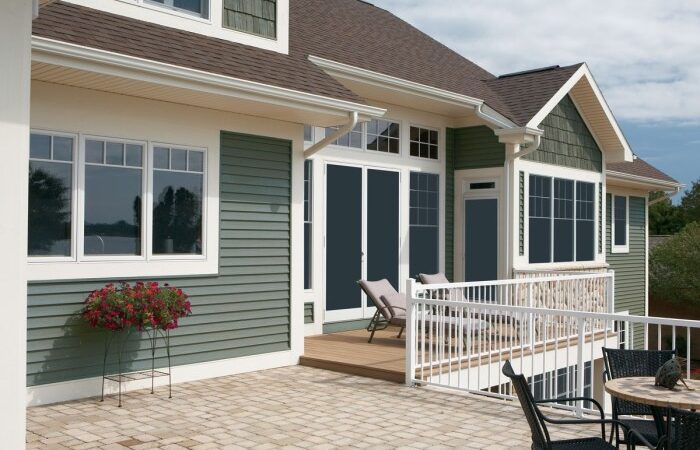
Innovations Siding & Windows: Step into a world where your home’s exterior transforms from ordinary to extraordinary. We’ll explore the latest trends, materials, and energy-efficient designs that are revolutionizing siding and windows. Get ready to discover how these innovations can enhance your home’s curb appeal, boost its value, and even lower your energy bills. This guide covers everything from cutting-edge manufacturing processes to smart glass technology and sustainable practices, providing a comprehensive overview for homeowners and industry professionals alike.
From the sleek aesthetics of fiber cement to the enduring strength of high-performance composites, we’ll examine the diverse range of options available. We’ll delve into the science behind energy efficiency, exploring insulation, air sealing, and the impact of window design on natural light. We’ll also discuss practical aspects like installation, maintenance, and the costs associated with upgrading your siding and windows.
Market Trends in Siding and Windows
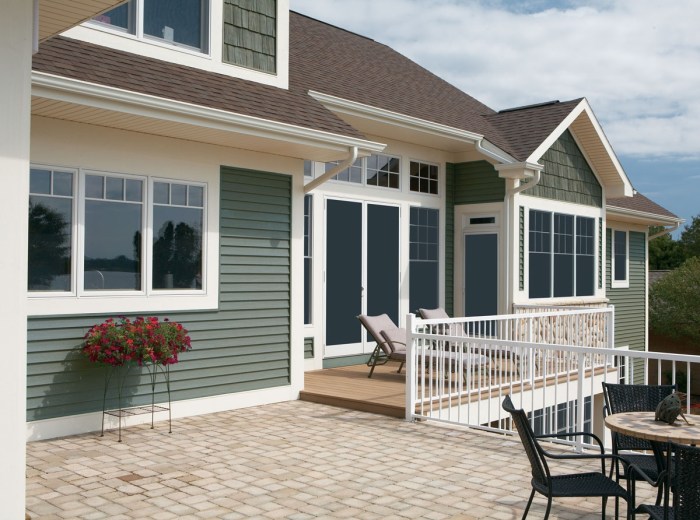
Source: windowworld.com
The siding and window industry is experiencing a period of significant transformation, driven by evolving consumer preferences, advancements in material science, and a growing emphasis on sustainability. This dynamic market is shaped by factors ranging from aesthetic appeal and durability to energy efficiency and cost-effectiveness. Understanding these trends is crucial for both manufacturers and consumers navigating this evolving landscape.
Innovative Siding and Window Materials
Current market trends favor innovative materials offering enhanced performance and aesthetics. High-performance vinyl siding, for instance, is increasingly popular due to its durability, low maintenance, and wide range of colors and styles. Fiber cement siding, while more expensive, boasts superior fire resistance and longevity. In windows, the demand for energy-efficient options like triple-pane glass and advanced frame materials is surging. Furthermore, there’s a rising interest in sustainable materials such as recycled content and sustainably sourced wood.
Emerging Technologies in Manufacturing
Three emerging technologies are significantly impacting siding and window manufacturing:
1. Advanced Manufacturing Processes: Automation and robotics are streamlining production, leading to increased efficiency and reduced manufacturing costs. This includes techniques like computer-numerical control (CNC) machining for precise window frame fabrication and automated assembly lines for siding production.
2. Smart Materials: The incorporation of smart materials, such as self-healing polymers in siding and electrochromic glass in windows, is gaining traction. Self-healing polymers can repair minor scratches and damage, extending the lifespan of the product, while electrochromic glass allows for dynamic light and heat control, enhancing energy efficiency.
3. 3D Printing: While still in its early stages for large-scale production, 3D printing holds the potential to revolutionize the industry by enabling the creation of highly customized and complex window and siding designs with reduced material waste. Imagine creating intricate, bespoke window frames with ease and precision.
Energy Efficiency in Siding and Windows
The demand for energy-efficient siding and windows is steadily growing, driven by rising energy costs and increasing awareness of environmental concerns. Consumers are increasingly prioritizing products with high insulation values (R-value for insulation and U-value for heat transfer), low air leakage rates, and advanced glazing technologies to minimize energy loss. This trend is particularly pronounced in colder climates where heating costs are significant. For example, the adoption of high-performance windows with argon or krypton gas fills and low-E coatings is becoming commonplace.
Market Share of Siding and Window Materials
The market share of different siding and window materials varies depending on geographical location, climate, and consumer preferences. However, some general trends can be observed.
| Material | Advantages | Disadvantages | Market Trend |
|---|---|---|---|
| Vinyl Siding | Affordable, low maintenance, a wide variety of styles and colors | Can fade over time, less durable than some other options | Stable, but facing competition from other materials |
| Fiber Cement Siding | Durable, fire-resistant, low maintenance | More expensive than vinyl, requires professional installation | Growing steadily, particularly in areas with stringent fire codes |
| Wood Siding | Aesthetically pleasing, can be customized | High maintenance, susceptible to rot and insect damage | Stable niche market, driven by high-end applications |
| Aluminum Siding | Durable, low maintenance, fire-resistant | Can dent easily, may not be as aesthetically pleasing as other options | Relatively stable, but facing competition from other materials |
| Vinyl Windows | Affordable, low-maintenance | Not as energy-efficient as some other options | Large market share, but facing pressure from more energy-efficient options |
| Wood Windows | Aesthetically pleasing, good insulation | High maintenance, susceptible to rot and insect damage | Niche market, often in high-end applications |
| Fiberglass Windows | Durable, energy-efficient, low maintenance | More expensive than vinyl | Growing market share due to energy efficiency and durability |
| Aluminum Windows | Durable, low maintenance, affordable | Not as energy-efficient as other options, can conduct heat and cold | Stable market share, but facing pressure from more energy-efficient options |
Innovative Materials and Manufacturing Processes: Innovations Siding & Windows
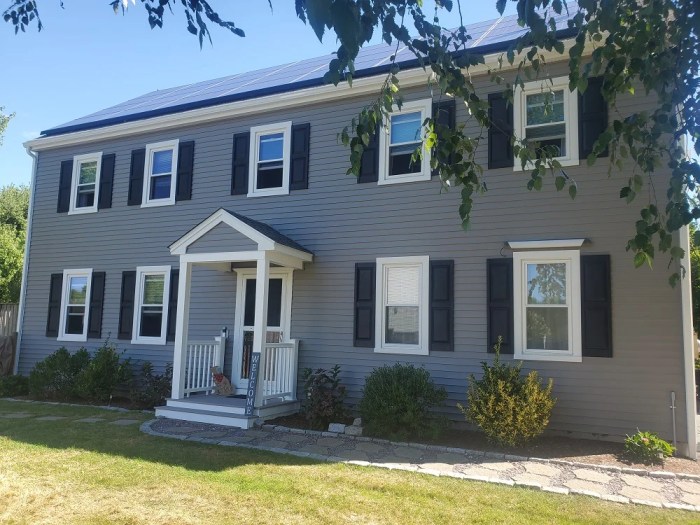
Source: carefreehomescompany.com
The siding and window industry is constantly evolving, driven by a demand for improved performance, aesthetics, and sustainability. This section explores the innovative materials and manufacturing processes shaping this evolution, focusing on their properties, environmental impact, and lifespan.
New materials and manufacturing techniques are leading to more durable, energy-efficient, and aesthetically pleasing products. Understanding these advancements is key to selecting the best options for your home improvement projects.
High-Performance Composite Siding Materials
High-performance composite siding materials often blends of polymers, wood fibers, and other additives, offer a compelling alternative to traditional materials like wood and vinyl. These composites boast superior durability, resisting impact damage, rot, and insect infestation better than wood. They also often exhibit excellent color retention, reducing the need for frequent repainting. The precise blend of materials can be tailored to achieve specific performance characteristics, such as improved insulation values or enhanced fire resistance. For instance, composite siding incorporating recycled materials contributes to a reduced environmental footprint compared to virgin material production.
Advancements in Window Glass Technology
Window glass technology has undergone a remarkable transformation. Self-cleaning glass utilizes a titanium dioxide coating that reacts with UV light to break down dirt and grime, making maintenance significantly easier. Smart glass, also known as electrochromic glass, dynamically adjusts its transparency based on sunlight intensity or user preference. This technology provides superior light control, reducing glare and energy consumption while enhancing privacy. Triple-pane windows, incorporating three layers of glass separated by gas fills like argon or krypton, significantly improve insulation, leading to reduced heating and cooling costs. These advancements significantly impact energy efficiency and homeowner comfort.
Environmental Impact of Siding and Window Manufacturing
The environmental impact of siding and window manufacturing varies significantly depending on the materials and processes used. The production of some materials, such as vinyl, can be energy-intensive and release greenhouse gases. Conversely, siding made from recycled materials or sustainably harvested wood has a smaller carbon footprint. Manufacturing processes also play a role. For example, water-based coatings reduce volatile organic compound (VOC) emissions compared to solvent-based paints. Choosing products with certifications like LEED or Greenguard ensures that environmental considerations have been prioritized during manufacturing.
Lifespan and Maintenance of Siding and Window Materials
The lifespan and maintenance requirements of siding and window materials vary considerably. High-quality vinyl siding can last for 20-30 years with minimal maintenance, requiring only occasional cleaning. Wood siding, while aesthetically pleasing, demands regular painting or staining to prevent rot and insect damage, and its lifespan can be shorter if not properly maintained. Fiberglass siding offers excellent durability and longevity, often exceeding 50 years with low maintenance needs. Similarly, the lifespan of windows depends on the material and construction. Double- or triple-pane windows with durable frames can last for decades, while low-quality windows may require replacement sooner.
Innovative Manufacturing Processes
Several innovative manufacturing processes are enhancing the efficiency and sustainability of siding and window production. These advancements contribute to improved product quality and reduced environmental impact.
- Extrusion: A continuous process used to create long lengths of vinyl or composite siding profiles with consistent dimensions and quality.
- Injection Molding: Used for creating complex window frame shapes and components with high precision and repeatability.
- Vacuum Laminating: A technique used to bond multiple layers of glass and interlayers in insulated glass units (IGUs), enhancing their strength and thermal performance.
- Robotic Automation: Robotics are increasingly employed in manufacturing to improve efficiency, reduce labor costs, and enhance precision in various stages of production.
- 3D Printing: Emerging as a potential method for creating custom window frames and other components, offering greater design flexibility.
Energy Efficiency and Sustainability
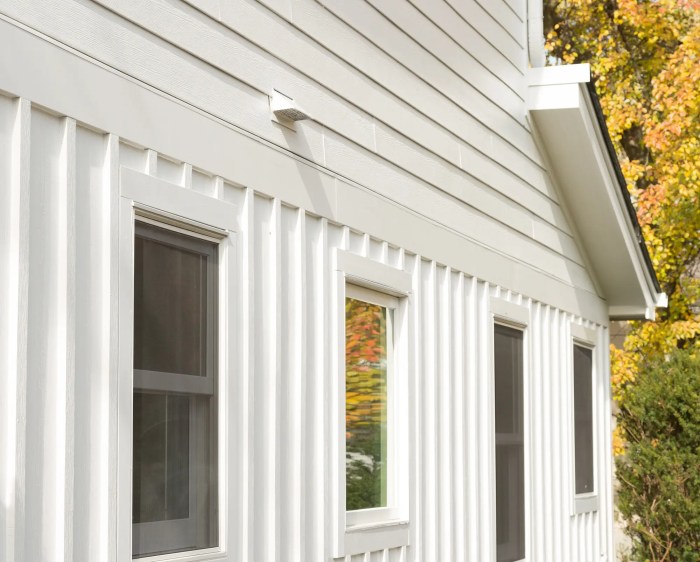
Source: beisselwindows.com
Choosing energy-efficient siding and windows isn’t just about lowering your energy bills; it’s a smart investment in a more sustainable future. By carefully selecting materials and designs, you can significantly reduce your home’s environmental impact while enjoying long-term cost savings. This section will explore how innovative siding and window technologies contribute to energy efficiency and what support is available to help you make the switch.
Energy-Efficient Siding and Window Designs
Many siding and window designs prioritize energy efficiency. High-performance windows often feature multiple panes of glass with low-E coatings, argon or krypton gas fills, and advanced frame materials like fiberglass or vinyl. These features minimize heat transfer, keeping your home warmer in winter and cooler in summer. Similarly, energy-efficient siding options include insulated vinyl siding, fiber cement siding with high R-values, and engineered wood siding with improved thermal performance. These materials create a thermal barrier, reducing heat loss or gain through the exterior walls. For example, a triple-pane window with argon gas and a low-E coating can reduce heat transfer by up to 50% compared to a standard double-pane window. Insulated vinyl siding, with its foam core, can offer an R-value significantly higher than traditional vinyl, improving the overall wall insulation.
Government Incentives and Rebates for Energy-Efficient Products
Several government programs offer financial incentives to encourage homeowners to upgrade to energy-efficient windows and siding. These incentives often take the form of tax credits, rebates, or low-interest loans. The specifics vary by location and program, so it’s crucial to check with your local utility company, state energy office, or the federal government’s Department of Energy website for details. For example, some states offer rebates for replacing old, inefficient windows with Energy Star-certified models. Federal tax credits might be available for homeowners who invest in energy-efficient home improvements, including new windows and siding that meet specific criteria. These programs can significantly reduce the upfront cost of upgrading to more sustainable products.
The Role of Insulation and Air Sealing in Improving Energy Performance
Proper insulation and air sealing are crucial for maximizing the energy efficiency of your new siding and windows. Air leaks around windows and doors are major sources of energy loss. Careful installation, using appropriate sealants and weatherstripping, is essential to minimize these leaks. Similarly, adequate insulation in walls and attics helps maintain a consistent indoor temperature, reducing the burden on your heating and cooling systems. Consider using high-performance insulation materials, such as spray foam insulation or dense-packed cellulose, to achieve optimal thermal performance. A well-insulated and air-sealed home will dramatically reduce energy consumption and improve comfort.
Case Study: Energy Savings with Innovative Siding and Windows
Let’s consider a hypothetical case study: A homeowner replaces their old single-pane windows and outdated aluminum siding with new triple-pane windows with argon gas fill low-E coatings, and insulated vinyl siding with an R-value of 5. The home is 2000 square feet, and the homeowner’s average annual energy bill is $2000. Assuming a 40% reduction in heat transfer due to the window upgrade and a 20% reduction in heat loss through the walls due to the new siding, the homeowner could save approximately $1200 annually ($2000 * 0.6). This represents a significant return on investment over the lifetime of the new products.
Calculating Energy Savings
Energy savings calculations can be complex, but a simplified approach can provide a reasonable estimate. The formula below demonstrates a basic calculation:
Energy Savings = (Initial Energy Consumption) x (% Reduction in Heat Transfer)
For example, if your current annual heating cost is $1500 and you expect a 30% reduction with new windows, your estimated annual savings would be $450 ($1500 * 0.3). Remember that actual savings will vary depending on factors like climate, home size, and individual energy usage patterns. It’s always best to consult with a qualified energy auditor for a more precise assessment.
Design and Aesthetics
Innovative siding and windows dramatically impact a home’s curb appeal, transforming its look and feel. The right choices can modernize a dated house, add character to a new build, or simply enhance the overall aesthetic. Understanding current design trends and how different materials and styles interact is key to achieving the desired effect.
Curb Appeal Enhancement Through Siding and Windows
The visual impact of siding and windows is undeniable. Modern, sleek siding can instantly update a home’s exterior, while strategically placed windows can add architectural interest and draw the eye. High-quality materials, such as fiber cement or engineered wood, offer durability and visual appeal, resisting the elements and maintaining their beauty for years. Large, energy-efficient windows can flood the interior with natural light, making the home feel more spacious and inviting, even from the outside. The interplay of color, texture, and material creates a cohesive and visually stunning exterior.
Key Design Trends in Siding and Window Selection
Several key design trends currently shape siding and window choices. The popularity of clean lines and minimalist aesthetics continues, with homeowners opting for large, evenly spaced windows and siding in neutral colors like grays, whites, and creams. However, there’s a growing appreciation for bolder choices, including contrasting colors, textured siding, and uniquely shaped windows. Sustainability is also a significant driver, with homeowners seeking eco-friendly materials and energy-efficient designs. The integration of smart technology into windows, such as self-tinting glass, is another emerging trend.
Siding and Window Styles Complementing Architectural Designs
The ideal siding and window choices depend heavily on the home’s architectural style. A traditional Victorian home might benefit from detailed, ornate trim around the windows and clapboard siding in a muted color palette. A modern farmhouse, on the other hand, might pair sleek, horizontal siding with large, multi-paned windows. A contemporary home could showcase expansive windows and smooth, minimalist siding in a bold color. The key is to maintain harmony and consistency between the home’s architecture and the chosen materials.
Visual Descriptions of Home Styles and Suitable Siding and Window Options
Example 1: A Craftsman-style home could feature cedar shake siding in a warm brown hue, complemented by double-hung windows with detailed trim in a contrasting dark brown or black. Imagine the warm tones of the wood creating a cozy, inviting feel, accentuated by the elegant window frames.
Example 2: A Ranch-style home might benefit from horizontal fiber cement siding in a light gray, paired with large, sliding glass doors and casement windows for maximum natural light. Picture the clean lines of the siding creating a sense of spaciousness, enhanced by the seamless integration of the expansive windows.
Example 3: A Contemporary home could showcase sleek, black metal siding with floor-to-ceiling windows, offering stunning panoramic views. Visualize the sharp contrast of the dark siding against the expansive glass, creating a dramatic and modern aesthetic.
Impact of Window Shapes and Sizes on Natural Light
Window shape and size directly impact the amount and quality of natural light entering a home. Large windows, particularly those facing south, maximize sunlight exposure. Picture a sun-drenched living room with expansive windows, creating a bright and airy atmosphere. Conversely, smaller windows, strategically placed, can create intimate and cozy spaces. The shape of the window also influences light diffusion. For example, arched windows can create a soft, diffused light, while rectangular windows provide more direct light. Consider a kitchen with a large bay window, allowing for ample natural light and a visually appealing focal point. In contrast, a bedroom with smaller, strategically placed windows might provide a more subdued and restful atmosphere.
Installation and Maintenance
Getting innovative siding and windows installed correctly is crucial for maximizing their lifespan and performance. Proper installation minimizes future problems and ensures you enjoy the benefits of your investment for years to come. Maintenance, while seemingly simple, plays a vital role in preserving the beauty and functionality of these exterior features.
Best Practices for Installing Innovative Siding and Windows
Proper installation begins with careful planning and preparation. This includes accurately measuring openings, ensuring proper flashing and sealing to prevent water intrusion, and using the correct fasteners for the specific materials. For siding, installers should follow manufacturer instructions meticulously, paying close attention to overlapping and securing panels correctly. For windows, precise measurements and level installation are paramount to prevent drafts, leaks, and operational issues. Using appropriate sealant around the window frame is also crucial. Experienced and certified installers are recommended to ensure the job is done to the highest standards, reducing the risk of costly repairs down the line.
Common Installation Issues and Their Avoidance
One common problem is improper flashing around windows and doors, leading to water damage. This can be avoided by using high-quality flashing materials and installing them according to manufacturer specifications. Another issue is incorrect siding overlap, which can cause gaps and water penetration. Careful attention to detail during installation, using the recommended tools and techniques, will prevent this. Finally, using the wrong fasteners can lead to siding damage or premature failure. Choosing fasteners appropriate for the siding material and adhering to the manufacturer’s recommendations is essential.
Maintenance Procedures for Different Siding and Window Materials, Innovations siding & windows
Maintenance varies greatly depending on the material. Vinyl siding generally requires only occasional washing with soap and water to remove dirt and debris. Fiber cement siding may need occasional repainting or staining to maintain its appearance. Wood siding requires more regular maintenance, including painting or staining every few years, and checking for signs of rot or insect infestation. For windows, regular cleaning with a soft cloth and mild detergent is sufficient for most materials. Inspect window seals annually for any cracks or deterioration. Proper lubrication of moving parts, such as window tracks, will ensure smooth operation and prevent wear.
Installation Cost Comparison of Various Siding and Window Options
Installation costs vary widely based on material choice, labor costs, and project complexity. Vinyl siding is generally the most affordable option, while fiber cement and wood siding are more expensive. Similarly, vinyl windows are typically less expensive than wood or fiberglass windows. However, the long-term cost-effectiveness of more expensive materials should be considered, as they often require less frequent maintenance and have a longer lifespan. For example, while the initial cost of installing fiberglass windows might be higher than vinyl, their superior durability and energy efficiency could result in lower long-term costs. Always obtain multiple quotes from reputable contractors to compare prices and ensure you are getting a fair price.
Five Tips for Prolonging the Life of Siding and Windows
Before we list the tips, remember that proactive maintenance is key to extending the life of your siding and windows. Regular inspections and timely repairs can prevent small problems from becoming major, costly issues.
- Clean your siding and windows regularly to remove dirt, debris, and mildew.
- Inspect your siding and windows annually for any signs of damage, such as cracks, loose panels, or damaged seals.
- Address any damage promptly to prevent further deterioration.
- Caulk around windows and doors as needed to prevent water intrusion.
- Lubricate moving parts of windows regularly to ensure smooth operation and prevent wear.
Closure
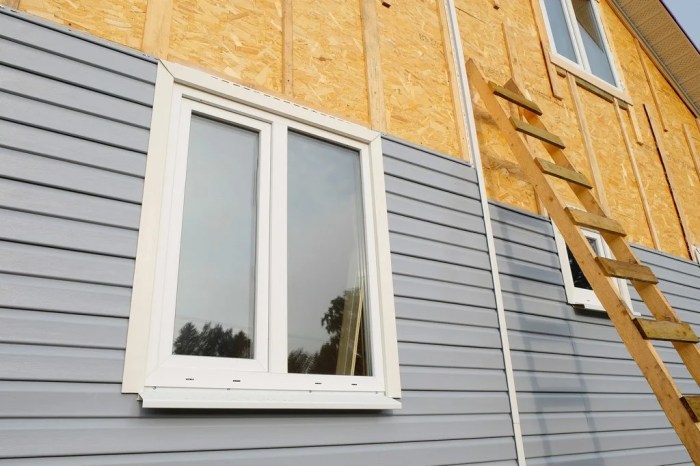
Source: dreamlandsdesign.com
Ultimately, choosing innovative siding and windows is an investment in your home’s future. By understanding the latest technologies and trends, you can make informed decisions that enhance your property’s beauty, comfort, and energy efficiency. Whether you’re driven by aesthetics, sustainability, or cost savings, the innovations discussed here offer a wealth of options to transform your home into a modern, energy-conscious haven. Remember to consider your individual needs and preferences when selecting the right materials and designs for your project.
FAQ Resource
What is the average lifespan of vinyl siding?
Vinyl siding typically lasts 20-30 years, depending on quality and maintenance.
Are there any government rebates for energy-efficient windows?
Yes, many local and national governments offer tax credits and rebates for energy-efficient windows. Check with your local energy provider or government websites for details.
How do I clean smart glass windows?
Cleaning methods vary depending on the type of smart glass. Check the manufacturer’s instructions; generally, a soft cloth and mild detergent are sufficient.
What’s the difference between fiber cement and vinyl siding?
Fiber cement is more durable and resistant to damage than vinyl, but it’s also more expensive and heavier. Vinyl is more affordable and easier to install but less durable.
Can I install the siding and windows myself?
While possible for some types, professional installation is generally recommended for optimal results and warranty coverage. Improper installation can lead to problems down the line.
Comments are closed.